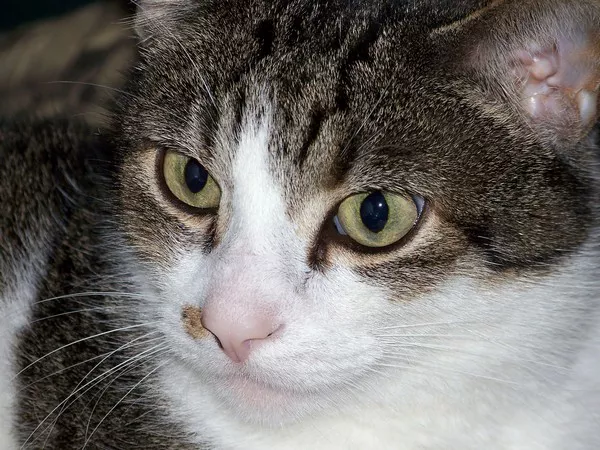Caring for a newborn kitten is a rewarding but challenging experience. Kittens are born entirely dependent on their mothers for nourishment and warmth, but in cases where the mother is unavailable, orphaned kittens need extra attention to ensure their survival and development. Understanding how to feed and care for a 10-day-old kitten is crucial for its growth, health, and well-being. This article will guide you through the essentials of cat feeding, including the proper feeding schedule, the right formula, techniques for bottle-feeding, signs of health issues, and the transition to solid food.
The Importance of Proper Feeding for Newborn Kittens
Feeding newborn kittens properly is essential to their survival and development. In the first few weeks of life, kittens grow rapidly, and their nutritional needs are significantly different from adult cats. At birth, a kitten weighs just a few ounces and relies entirely on its mother’s milk or a suitable substitute to receive the vital nutrients it needs to thrive. Without proper nourishment, a kitten may suffer from malnutrition, dehydration, or even fail to thrive, leading to serious health complications.
Additionally, a kitten’s digestive system is still developing during these early weeks, meaning they cannot yet process solid food. Their bodies rely heavily on high-quality milk or formula to provide the proteins, fats, vitamins, and minerals necessary for proper growth. If you are raising an orphaned kitten or supporting a mother cat who is struggling to nurse her kittens, it’s essential to follow a strict feeding routine to support their cat feeding needs.
Nutritional Needs of Kittens in Their First Few Weeks of Life
In the first few days and weeks of life, kittens need kitten milk formula that closely mimics their mother’s milk in composition. Mother’s milk provides not just nutrition but also antibodies that help kittens develop immunity. Without this source of nourishment, kittens are vulnerable to illness and poor growth.
The key nutrients for kittens include:
Proteins: Kittens need a high-protein diet to support their rapid growth and muscle development. Proteins provide essential amino acids that are crucial for tissue repair and immune function.
Fats: A high-fat content is necessary to provide energy, as kittens are growing rapidly in the early weeks. Fat is also essential for brain development.
Vitamins and Minerals: Kittens require a variety of vitamins and minerals, including calcium, phosphorus, and vitamins A and D, to support their bone and organ development.
Water: Proper hydration is critical for kittens, especially if they are being bottle-fed. Dehydration can set in quickly and lead to serious health issues.
In the first two weeks of life, kittens need to be fed primarily milk (formula or mother’s milk) every 2-4 hours, including overnight. After this period, you can begin to transition them to solid food as they approach 3-4 weeks of age.
Feeding Frequency and Schedule for a 10-Day-Old Kitten
Every 2-4 Hours: Newborn Kittens Need Frequent Feedings
At 10 days old, kittens are still very much in the critical early development stages, so they require regular feedings to support their growth. During this period, they should be fed every 2-4 hours, including during the night. This frequent feeding schedule mimics the nursing pattern that they would have if they were with their mother.
A good feeding schedule includes:
Daytime Feedings: Every 2-4 hours during the day (i.e., morning, mid-day, afternoon, evening).
Nighttime Feedings: While it might seem daunting, newborn kittens also need overnight feedings, so be prepared to set an alarm for a nighttime feeding. Kittens rely on frequent meals for growth, and missing a feeding session could lead to hypoglycemia (low blood sugar), dehydration, or stunted growth.
By the time the kitten is 3-4 weeks old, the frequency of feedings can be reduced, and they can begin the weaning process, slowly transitioning to solid food.
Amount of Food: Typically 2-15 ml per Feeding
The amount of food a 10-day-old kitten will need depends on its size, breed, and overall health, but generally, newborn kittens will consume about 2-15 milliliters of kitten formula per feeding. As kittens grow, they will naturally start to consume more formula per meal and will space out their feedings.
For small or underweight kittens, you may need to feed the lower end of this range, but for healthy kittens, feeding towards the upper range of 10-15 ml per session is typical.
It’s important to avoid overfeeding, as this can cause discomfort, vomiting, and even aspiration (milk entering the lungs), which can lead to pneumonia. It’s always best to follow the feeding instructions on the kitten formula or consult a vet for specific recommendations.
Monitoring Growth: Ensuring Weight Gain
A major indicator that your kitten is feeding well is consistent weight gain. Kittens should gain about 15-20 grams per day during the first few weeks of life. Regularly weighing the kitten on a small digital scale can help you track its progress. If a kitten fails to gain weight or even loses weight, it could indicate that it is not getting enough nutrition, or it may have an underlying health issue that requires veterinary attention.
Choosing the Right Formula
If the kitten’s mother is unavailable, it is important to feed the kitten a high-quality kitten milk formula. These formulas are designed to closely replicate the composition of mother’s milk, ensuring that the kitten receives the right balance of nutrients.
Kitten Milk: Formula like KMR (Kitten Milk Replacer) or Royal Canin Kitten Milk is specially designed to meet the nutritional needs of young kittens. Avoid using regular cow’s milk, as it does not contain the necessary nutrients and can cause digestive upset or diarrhea in kittens.
Avoid Cow’s Milk: Cow’s milk can be harmful to kittens because it contains high levels of lactose, which many cats cannot digest properly. Feeding cow’s milk can lead to gastrointestinal issues like diarrhea and dehydration, which can quickly become life-threatening for newborn kittens.
As the kitten approaches 3-4 weeks of age, you can begin the process of introducing solid food. Start with wet kitten food and gradually mix it with kitten formula or water to make a mushy, easy-to-eat consistency. This process, known as weaning, is gradual, and you should continue to provide formula until the kitten is comfortable eating solid food exclusively.
Feeding Techniques
Bottle Feeding
Bottle-feeding a kitten requires patience, care, and the right technique to ensure that the kitten is feeding properly.
Prepare the Formula: Warm the kitten formula to body temperature (about 100°F or 38°C) before feeding. Test the temperature on your wrist to ensure it is not too hot or too cold.
Position the Kitten: Gently hold the kitten in a natural feeding position, with its head slightly elevated. Avoid feeding kittens on their backs as this can cause aspiration.
Feeding Time: Hold the bottle with the nipple pointing towards the kitten’s mouth. Gently squeeze the bottle to allow the kitten to suckle. If the kitten is not sucking, check the nipple for blockages or make sure the kitten is positioned correctly.
Burp the Kitten: Just like human babies, kittens may need to be burped after feeding to prevent gas buildup. Gently rub or pat the kitten’s back to encourage burping.
Stimulating Elimination
Newborn kittens cannot urinate or defecate on their own during the first few weeks of life. After each feeding, you need to gently stimulate the kitten’s genital area using a soft, warm cloth or cotton ball. Lightly rub the area in a circular motion to encourage elimination. This is an essential part of cat feeding and care in the early stages of kittenhood.
Signs of Health Issues
Dehydration
Kittens can quickly become dehydrated, which can be life-threatening. Signs of dehydration include:
- Sunken eyes
- Dry, sticky gums
- Lethargy or lack of energy
- Weakness or poor suckling reflex
If you notice any signs of dehydration, it’s essential to seek veterinary care immediately.
Weight Gain and Alertness
Consistent weight gain and a kitten’s alertness are the best indicators of health. If the kitten is not gaining weight or appears lethargic, it may not be getting enough formula or may have a health issue.
Transition to Solid Food
Weaning Process: When and How to Start
At around 3-4 weeks of age, the kitten will begin to show signs of interest in solid food. The weaning process should be gradual, starting with soft, wet kitten food mixed with formula to create a smooth consistency. You can gradually reduce the amount of formula used until the kitten is eating solid food entirely.
Start with a high-quality kitten food that is specifically formulated for growth and development. Wet food is recommended during this phase because it is easier to chew and digest.
Wet Food: The Ideal First Solid Food
Wet kitten food, such as canned kitten food, is a great option during the weaning process because it is soft and highly digestible. You can start by offering small amounts of wet food, gradually increasing the amount as the kitten becomes accustomed to eating it.
Conclusion
Feeding a 10-day-old kitten requires dedication, consistency, and attention to detail. Proper cat feeding is critical for their growth, health, and development. By following the recommended feeding schedule, choosing the right formula, and paying attention to your kitten’s health and behavior, you can help ensure that your kitten thrives during its critical early weeks. If you have any concerns about your kitten’s feeding or health, don’t hesitate to consult a veterinarian for expert guidance.
Related Topics



























